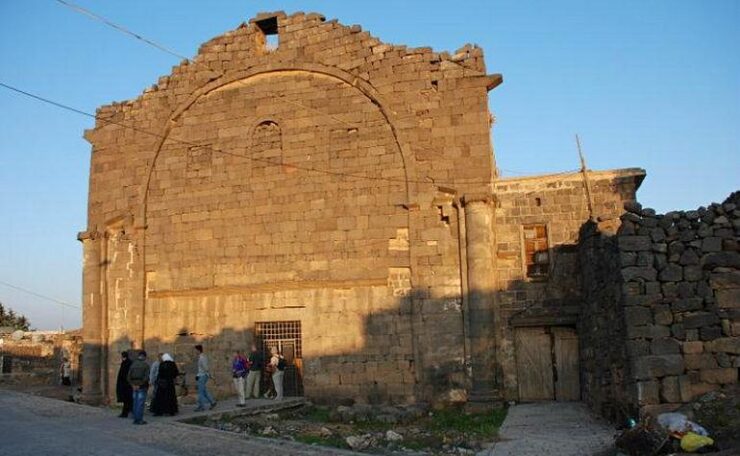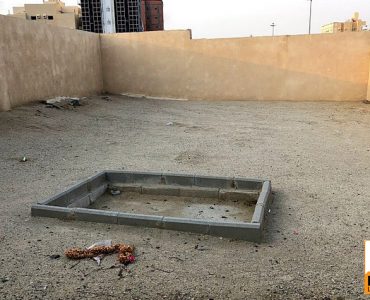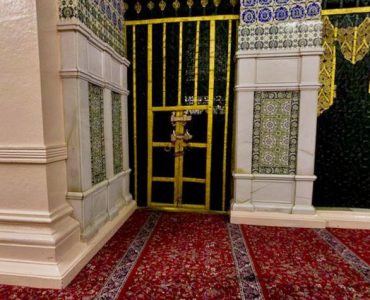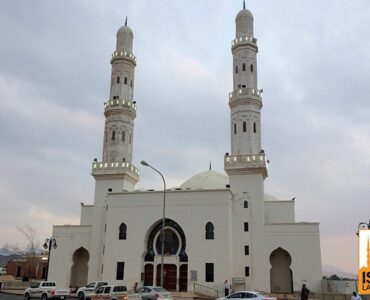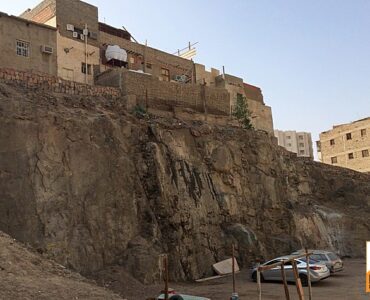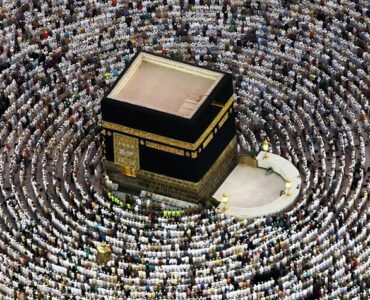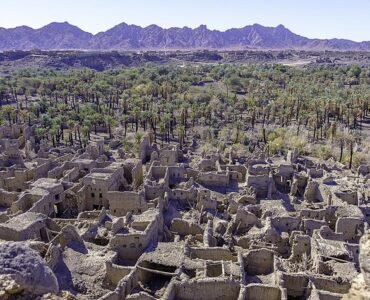This ruin in Busra used to be the monastery of the Nestorian monk Bahira, who spotted the signs of Prophethood on the young Muhammad (ﷺ) while the Prophet was on a trade caravan on the way to Syria.
Travel to Syria
- When Muhammad (ﷺ) was about 12 years old, he accompanied his uncle Abu Talib on a trade journey to Syria (which was a part of the region known as ‘Sham’). In a place called Busra a very interesting incident took place, which caused Abu Talib to return Muhammad to Makkah.
- On their trade journey they met a Christian monk by the name of Bahira, who lived a simple life in a monastery which contained ancient sacred texts that were not available anywhere else. Bahira had very simple provisions and lived a harsh life, surviving on the bare essentials. His diet was very simple and the clothes he wore were also coarse and well worn. He was looking outside and caught sight of a caravan approaching. His residence was on the main caravan route and he regularly saw caravans passing by, carrying different goods destined to be sold in the great markets of Syria.
Bahira’s invitation
- He noticed that this caravan was different; there was something special about it. He decided to invite the people to a meal and find out more. Bahira sent a message to the caravan that his hospitality was extended to all the members of the caravan. The caravan traders accepted the invitation and arrived at the monk’s place.
- When they arrived, Bahira searched their faces looking for something. He said that he had offered his hospitality to everyone, was there anyone left behind? They said that they had left a young boy called Muhammad to look after the camels. Bahira insisted that they send someone to get Muhammad and bring him to the entertainment.
Meeting the young Muhammad (ﷺ)
- When Bahira saw the face of Muhammad he was delighted for he was aware from the scriptures of the arrival of a mighty prophet and he could see the signs on the young boy. He asked him a series of questions such as how he sleeps, what does he see when he sleeps, what he thinks about and what he does all day. The young Muhammad answered truthfully which convinced Bahira of who he is.
- After the food, Bahira approached Abu Talib and asked him of his relationship to Muhammad. Abu Talib initially replied saying that he was his son upon which Bahira remarked that that could not be possible upon which Abu Talib confirmed that he was in fact his nephew. Bahira revealed to Abu Talib that Muhammad would be a great prophet one day. He said that when he had seen the caravan in the distance there was a cloud hanging over them, which was shading them from the great heat of the desert. When the caravan had stopped under a tree the cloud had also stopped above them.
- Bahira said that he had seen the stones and the trees prostrating to Muhammad as he had been walking by. They only do this for a prophet of Allah. He looked at the Muhammad’s back and noticed the seal of the prophets, which was an oval shape protruding just below Muhammad’s shoulder blades. He said that this was one of the signs of a great prophet to come that was taught to them in their books.
- Bahira said, “This is the master of all humans, Allah will send him with a message which would be a mercy to all humans”. Bahira advised that Muhammad should be taken back to Makkah at once, if the Jews found out about Muhammad they would try to kill him. Abu Talib took the advice of this wise old monk and sent Muhammad back with some of the guides.
Video of the Monastery of Bahira
- Some commentators report that accompanying Muhammad (ﷺ) on this trip was the young Abu Bakr and Bilal (رضي الله عنهم). They formed a deep bond which lasted right through their adult life.
- It should also be noted that some commentators have dismissed the authenticity of the story of Bahira’s interaction with the Prophet (ﷺ). However, the majority of ḥadith and seerah experts regard the incident as established. A more detailed explanation can be found on the IslamicPortal website.
References: Musalla.org, Life of the Prophet (ﷺ) – Shaykh Abdul Nasir Jangda (Qalam Institute)

